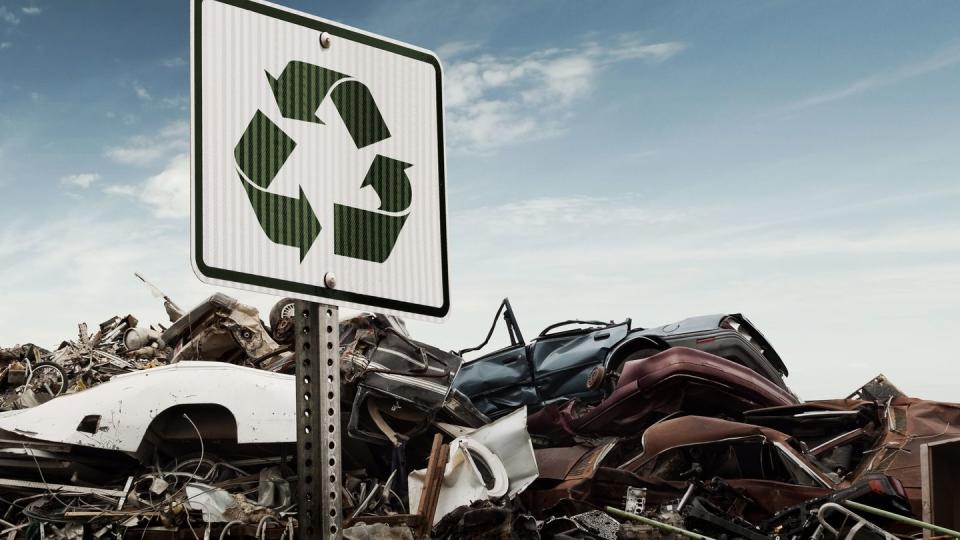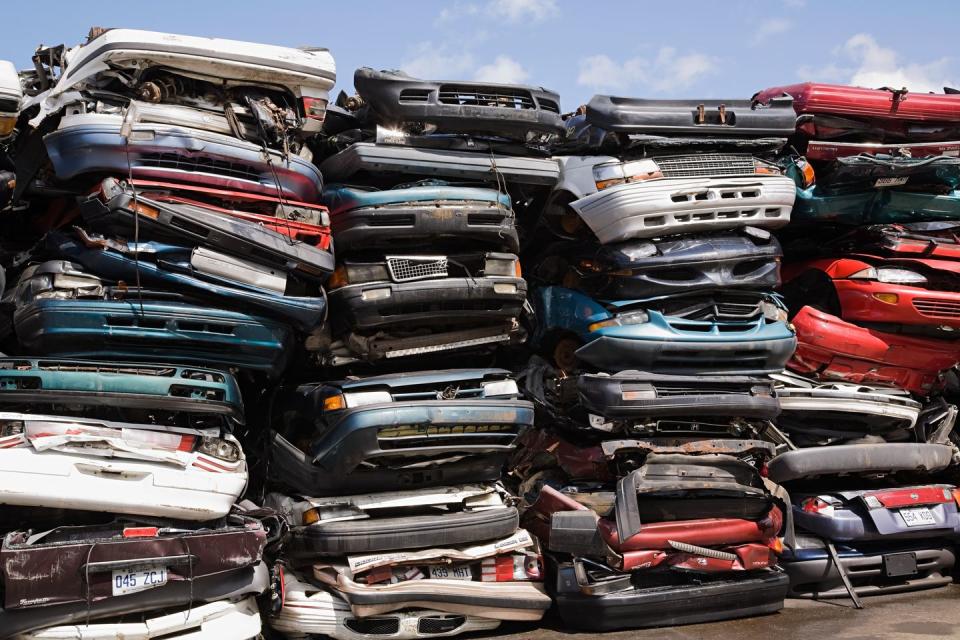How to Make Sure Your Junked or Donated Car Doesn’t Do More Harm Than Good

Auto recycling “gets cleaner and greener every year, for both environmental and economic reasons,” said Joe Hearn, CEO of SHiFT, a new company from Middletown, Rhode Island.
Each year, eight to nine million tons of automobile waste is generated in the European Union, and 25% of that is hazardous.
“SHiFT is trying to guarantee the best environmental outcome. We only work with recyclers that have the highest green rating,” Hearn said.
If you decide to donate your car to charity, the process is swift. Often, the next day a tow truck shows up and takes it away, leaving you with a tax deduction.
Unless the car is still fully functional and ready to go back on the road, the next step is generally the local junkyard, or recycler as they prefer to be called these days. What happened to the car after that? Chances are high you’ll never know.
“I believe the auto recycling story is wildly misunderstood,” said Joe Hearn, CEO of SHiFT, a new company from Middletown, Rhode Island, designed to add a greener tinge to the growing field of charitable auto donations. Car collectors get a nod, too, as SHiFT encourages the sale of as many parts as possible. Hobbyists hated the federal Cash for Clunkers program in 2009, because it took 677,081 vehicles out of parts circulation.
According to Hearn, auto recycling “gets cleaner and greener every year, for both environmental and economic reasons.” Hearn said the average internal-combustion car today is up to 80% recyclable, including the metal, tires, fluids, plastics, fabrics, and rubber parts. The engine, though, is 90% recyclable.
That level of recycling is mandated in Europe. Via EU legislation in place since 2000, new cars can only be sold if it’s possible to reuse or recycle them to a minimum of 85% by mass. The reuse/recovery minimum is 95%. Each year, eight to nine million tons of automobile waste is generated in the EU, and 25% of that is hazardous.
The hardest part of auto recycling is dealing with automotive shredder residue, also known as “fluff,” the plastics, glass, foam, rubber, and fibers that makes up about 20% of a car’s content. The US produces five million tons of the material annually.

Most goes into landfills; separating fluff into reusable components is difficult, and contamination with PCBs (polychlorinated biphenyls) is an issue. A proposed EU directive would require 25% of new car plastic be recycled, with 25% of it sourced from end-of-life cars and trucks.
The SHiFT Vehicle Retirement Initiative is a partnership with the Automotive Recycling Training Institute that gives participating recyclers incentives to remove and resell as many original equipment parts as possible (pleasing collectors), and responsibly dispose of what remains.
“SHiFT is the only vehicle retirement program focused primarily on the planet,” Hearn said. SHiFT works with yards that have become Certified Automotive Recyclers through the trade group Automotive Recyclers Association. To get approved, a commitment to proper waste and hazardous material handling has to be demonstrated, as well as safety and customer service.
Recyclers working with the SHiFT program must agree to handle hazardous materials in accordance with state and federal environmental protocols (protecting groundwater), and promise not to resell complete engines from the cars they take in, only parts from them.
The engine must be marked as not for sale, ensuring it is no longer producing carbon emissions.
The recycler completes an affidavit, and the donor gets confirmation that the powerplant is out of service, along with a carbon avoidance calculator. “None of the vehicles processed through SHiFT are resold into transportation uses domestically or internationally,” Hearn said.
Hearn also heads initiative partner Advanced Remarketing Services (ARS Cars), a wholesale car dealer that handles the title transfer, towing, and reporting of vehicle donations for prominent nonprofits, including Habitat for Humanity, National Public Radio, the American Cancer Society, and the Special Olympics. Since 2007, ARS has helped raise $275 million for its charitable partners, including $16 million for Habitat in 2022.
In 2023, ARS paid out 85% of every gross dollar raised, and Hearn said the number has always been over 80% and as high as 87%. “Auto recyclers have very different approaches to how they sell and dispose of parts, with different concerns and requirements,” Hearn said. “SHiFT is trying to guarantee the best environmental outcome. We only work with recyclers that have the highest green rating.”

Of course, another way to support the environment is to donate your car through a service that benefits green groups. California-based Cars2Charities, for example, works with a slew of them, including Breathe Southern California, Clean Air Task Force, Flamingo Gardens, Columbia Land Trust, Project Chimps, and the Nature Conservancy. Also supported are animal rescue, veteran causes, homeless support, and health concerns.
Richard Hernandez, general manager at Cars2Charities, said it picks up cars nationwide, about 100 to 200 per month. Depending on condition, he said, cars (and carts) go either to a third-party recycler or to auto auctions.
Lauren Doll, Cars2Charities vice president, said the company started as a family business in 1995, and now supports upwards of 1000 charities.
“It won’t work if the charities don’t let the public know that the service is offered,” Doll said. “It takes a lot of effort on their part.” She said it’s rare for engines in donated cars to go back into service. “Most don’t get reused,” she said.
According to Doll, the beneficiaries get detailed accounting of where the funds went. Amounts to charity can vary from year to year, and is most recently 60%, Doll said.
If you buy a new car, how long typically do you keep it? Please comment below.

 Yahoo Autos
Yahoo Autos 